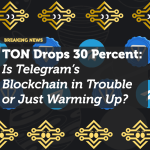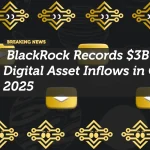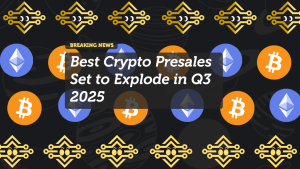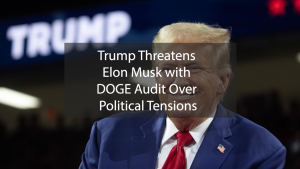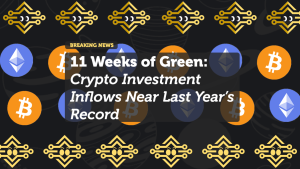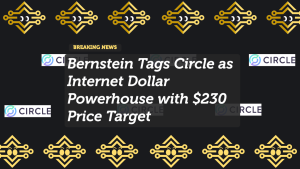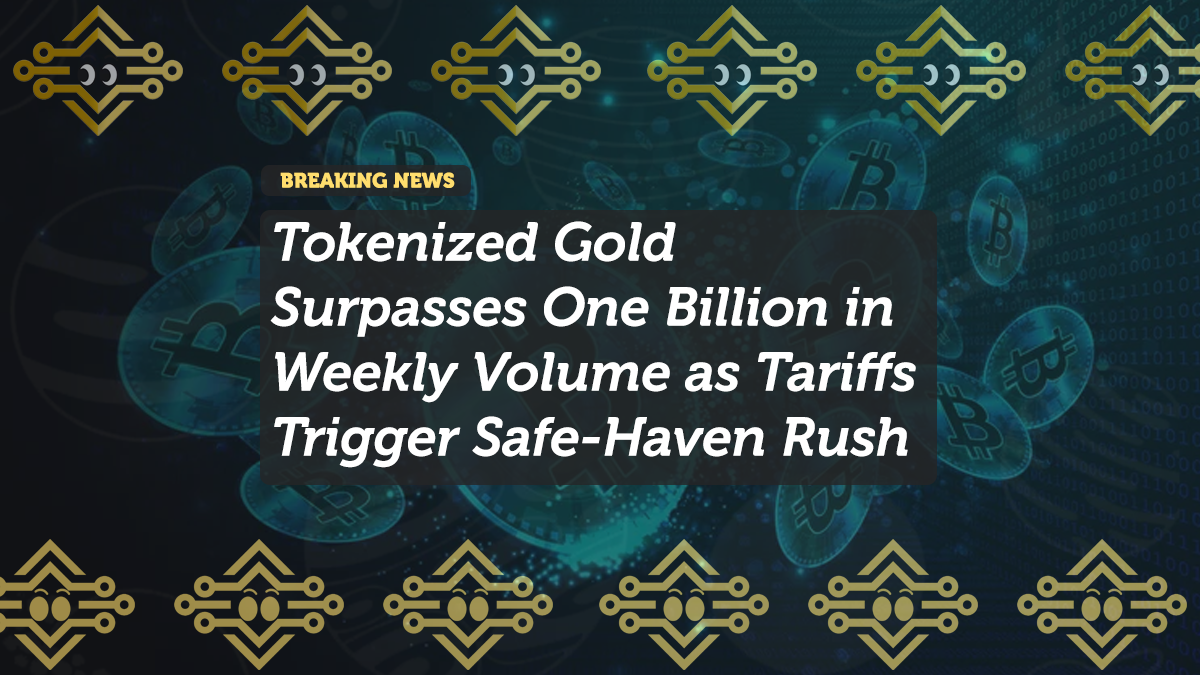
Tokenized Gold Surpasses One Billion in Weekly Volume as Tariffs Trigger Safe-Haven Rush
So far in 2025, the markets have been rocked by geopolitics, tariffs, and inflation fears—and in the middle of it all, gold is having a moment.
According to TradingView data, gold has surged over 18 percent since the start of the year, while Bitcoin has dropped more than 12 percent. With U.S. President Donald Trump reigniting tariff battles, investors are clearly shifting toward safe-haven assets.
But there’s a twist this time: tokenized gold—digital versions of gold assets on the blockchain—has emerged as one of the biggest beneficiaries of this market mood. With weekly trading volume surpassing one billion dollars for the first time since the 2023 banking crisis, the market is sending a loud message: digital gold is no longer just a niche.
Gold’s Rise and Bitcoin’s Slump: A Safe-Haven Shake-Up
Let’s look at the numbers:
- Gold hit a record high of over $3,100 per ounce on March 31 and continues to climb.
- Bitcoin, on the other hand, slipped below $82,000 in early April, struggling under global macro pressure.
- This divergence underscores the shift in investor sentiment—especially among those spooked by trade war talk and global uncertainty.
Illia Otychenko, lead analyst at CEX.IO, summed it up well:
“Tokenized gold presents a compelling alternative for crypto-native investors who might otherwise look to Bitcoin or stablecoins.”
Tokenized Gold: What Is It and Why Is It Booming?
Tokenized gold refers to digital tokens on blockchain networks that are backed 1:1 by physical gold. Think of it as owning gold without needing a vault.
Some of the most popular tokenized gold products include:
- Paxos Gold (PAXG)
- Tether Gold (XAUT)
- Kinesis Gold (KAU)
These tokens allow investors to gain exposure to gold with the speed, transparency, and liquidity of crypto—without leaving the blockchain world.
And in 2025, the surge is real:
- PAXG trading volume is up over 900 percent since Trump’s January 20 tariff announcement.
- XAUT trading volume has jumped more than 300 percent.
- KAU exploded with an 83,000 percent increase in volume.
This isn’t a blip—tokenized gold is rapidly becoming a go-to asset class for crypto-savvy investors looking for safety in turbulent times.
What’s Driving the Surge in Tokenized Gold?
1. Geopolitical Trade Tensions
Trump’s renewed tariff strategy has revived fears of a prolonged global trade war. Import duties on goods from China, the EU, and others have escalated tensions and sent shockwaves through global markets.
Investors are reacting the same way they did during the 2023 U.S. banking crisis—by flocking to assets that hold value during times of uncertainty.
2. Digital-First Portfolios
Unlike traditional gold, tokenized gold appeals to digital-native investors. As blockchain-native real-world assets (RWAs) continue to gain traction, tokenized gold offers the perfect blend of tradition and innovation.
“In this context, tokenized gold has primarily served as a diversification tool,” Otychenko noted, “gaining increasing traction in investor portfolios as market uncertainty deepens.”
3. Surging Interest in Real-World Assets (RWAs)
The entire RWA tokenization sector is booming. From tokenized bonds (like BlackRock’s BUIDL fund) to real estate and now gold, blockchain-backed versions of traditional assets are on fire.
BlackRock’s BUIDL fund itself has tripled in value in just three weeks, showing that institutions are getting serious about putting traditional assets on-chain.
Why Tokenized Gold Could Keep Climbing
Here’s what makes tokenized gold particularly attractive right now:
- Liquidity: Easily tradable on crypto exchanges 24/7.
- Accessibility: Investors can buy fractional shares of gold without needing a custodian or physical delivery.
- Blockchain Benefits: Full transparency, low transaction costs, and near-instant settlement.
With more stablecoin holders and DeFi users looking for ways to diversify in this volatile macro environment, tokenized gold is positioned to become a core component of the digital investor’s toolkit.
Risks and Limitations to Keep in Mind
Of course, tokenized gold isn’t a perfect replacement for physical bullion—at least not yet.
Here’s why:
- Trust in Custodians: These tokens are only as good as the physical gold backing them. That requires trust in issuers like Paxos, Tether, or Kinesis to hold reserves and offer transparency.
- RWA Infrastructure Is Still Maturing: We’re still in the early innings of RWA adoption. Issues like interoperability, on-chain verification, and cross-chain compatibility are ongoing challenges.
- Regulatory Overhang: The stablecoin and tokenized asset sectors are drawing increasing attention from U.S. and EU regulators. Clear rules haven’t fully landed yet.
Still, for now, the momentum is unmistakable.
Market Stats at a Glance (as of April 10, 2025)
| Asset | Price | YTD Change | Volume Surge Since Jan 20 |
|---|---|---|---|
| Gold (physical) | $3,118.00 | +18% | — |
| Bitcoin (BTC) | $81,697.00 | -12% | — |
| Paxos Gold (PAXG) | $3,143.61 | — | +900% |
| Tether Gold (XAUT) | $3,132.60 | — | +300% |
| Kinesis Gold (KAU) | — | — | +83,000% |
| Tokenized Gold Total Volume | — | — | Over $1 Billion Weekly |
Final Thoughts: A Golden Era for Digital Safe Havens?
Gold is no stranger to uncertain markets, but tokenized gold is emerging as a serious contender in this digital-first financial landscape.
With rising tariffs, inflation fears, and geopolitical tension, the market is clearly craving safety—and that safety is now on-chain.
Whether you’re a crypto investor looking to hedge against volatility or an institution exploring RWAs, tokenized gold deserves a spot on your radar.
Want to explore more?
Let me know if you’d like a deep dive into:
- How to buy and store tokenized gold
- Comparing different gold-backed tokens
- Real-world asset tokenization beyond gold
I’ll break it down for you.









